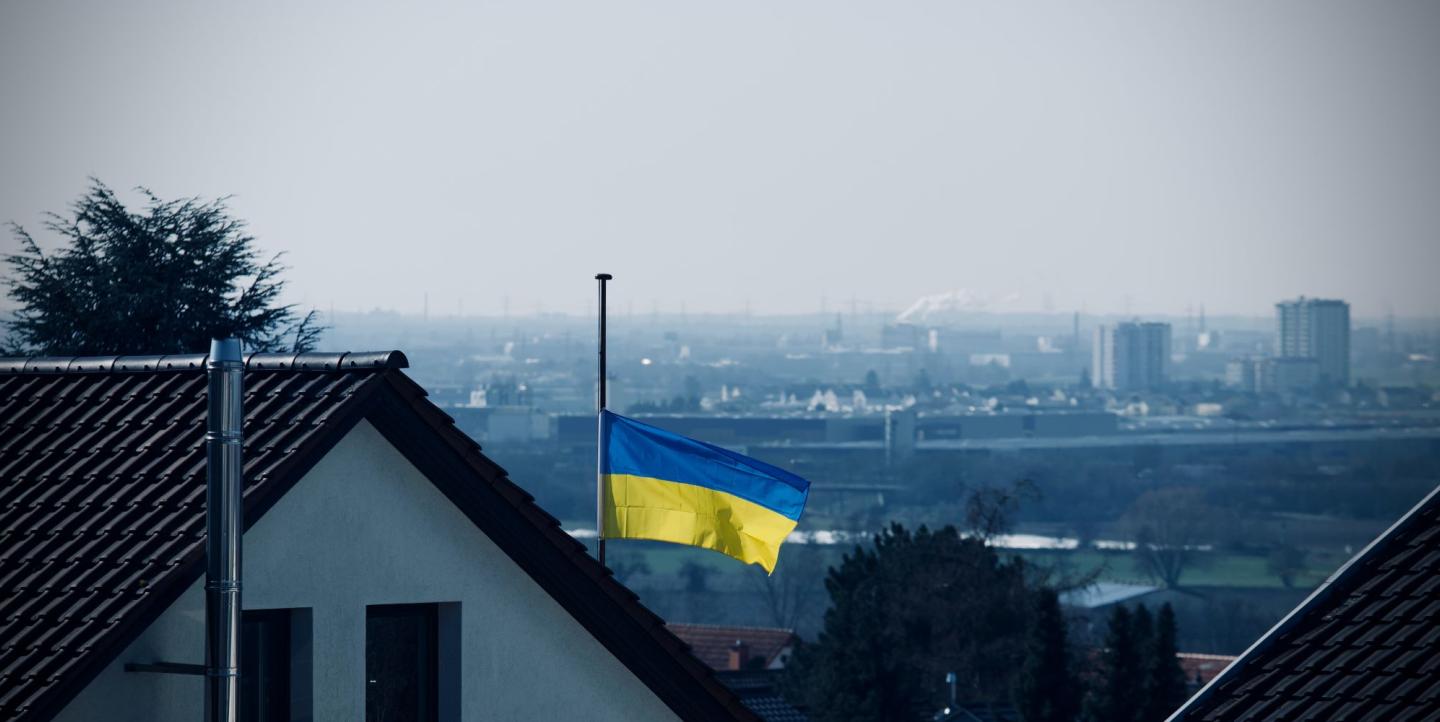A new tool for journalists, designed by a Ukrainian engineer from Kharkiv, may revolutionize the way reporters get access to sources during wartime. UABRAVE connects reporters with people on the ground using a secure database, allowing journalists to find sources while reducing risk to sources’ safety.
UABRAVE is the creation of engineer Roman Vydro, who noticed a “gap in the system” when he began giving interviews to foreign news outlets during the first few days of the war. News outlets were frequently approaching him for interviews due to his command of English, and his proximity to the fighting. This up-close look at how the press operated in a crisis revealed several inefficiencies to Vydro, which he realized his engineering expertise could address.
Vydro is the co-founder of Garage Hub, a combination laboratory/think tank for engineers that is also engaged in education and community services projects, as well as creative communication initiatives. When Russia launched its invasion in late February, Garage Hub members immediately pivoted their innovations toward the war effort. From this, UABRAVE was born.
How it works
UABRAVE works by maintaining a secure database of “speakers,” or individuals in Ukraine vetted by Vydro’s team to ensure authenticity. The speakers are required to speak English well, and often have an area of expertise, for example in medicine or education. Currently, the database has about 150 speakers, and the list is growing.
Reporters who sign up to the service are also vetted. Each journalist must provide the link to a news outlet that can be verified, and must have at least one article published on that site prior to the beginning of the war on February 24. If the legitimacy of the reporter can’t be verified, they are not allowed access.
Once the reporter makes it through the vetting process, they are given access to the speaker database, which provides the speaker’s name, location and their “summary” — which includes where they are located or what kind of actions they are taking. This tweet-size summary is intended to help the reporter choose the speaker that best fits the story they are trying to tell.
Each speaker is assigned an identification number. When the reporter decides, for example, that they would like to interview numbers 27, 31, and 72, UABRAVE releases the contact information for those requested IDs to the reporter via a secure message. This method is designed with the safety of sources in mind. “We don’t want to give out those phone numbers or anything of the sort to any bad actor who could harm those people,” said Vydro.
Currently, the entire process can take up to two hours, but Vydro hopes that with more funding he can reduce the response time to as little as 15 minutes.
“It is very hard for me to believe that such a simple tool was just not there before,” said Vydro. “There are a lot of initiatives that work in this direction, but none that are working in this specific A to B service, where we have people giving out interviews really fast — truthful ones — and fighting this monster of propaganda,” he said. “To me, this is a silver bullet.”
Applications beyond Ukraine
So far, UABRAVE has attracted the interest of 200 media outlets from 31 countries. Going forward, Vydro sees UABRAVE breaking into media markets in China, India, Africa and Latin America. He has a vision for UABRAVE beyond the war, too, with applications for a variety of reporting.
“The best thing about it is that, technologically, once we develop something more sustainable and more portable, it can be used [in other situations]. Imagine an earthquake, for example. I feel like if we design it well enough, this kind of system could be unfolded fast,” said Vydro. “It will allow the reporters an immense capacity to communicate this dreadful catastrophe. It [could provide] a more organic and touching narrative to any article.”
UABRAVE is one of countless grassroots organizations using innovation to fight the war with Russia. After getting their parents out of Kharkiv, Vydro and his colleagues piled in a van, pets included, and drove to a new remote location, where the team lives and works together under the same roof — an all-volunteer army fighting the war engineer-style.
“We are the nation that is proving that creativity is the oil of the 21st Century. This is basically a war between creativity and senseless brute force,” said Vydro. “I’m asking people to use our service, because this is the only way to turn our creative spark into a fire.”
Photo by Bernd Dittrich on Unsplash.

